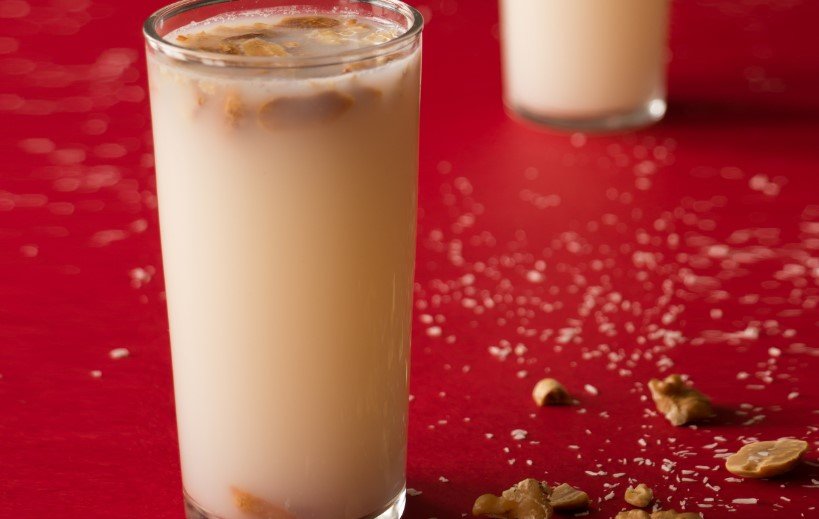In the bustling streets of Cairo during Ramadan, people break their fast with a creamy, refreshing drink called sobia, a staple that traces its roots back to medieval Egypt. This beloved beverage, made from simple ingredients like rice, coconut, milk, and sugar, has evolved over centuries and spread across the Middle East, adapting to local tastes while keeping its cultural importance in traditions.
Origins of Sobia in Ancient Egypt
Sobia started as a fermented drink in medieval Egypt, where people mixed grains with water or milk and let it naturally ferment. This method helped preserve food in a hot climate and created a lightly fizzy, nourishing beverage that provided energy after long days.
Historians point to records from the 13th century showing sobia as a common refreshment for travelers and pilgrims. Over time, as Islamic customs grew stronger, the drink shifted away from fermentation to become nonalcoholic, fitting better into daily life and religious practices.

Early versions often used barley or rice, soaked and blended for a thick texture. People valued it for its cooling effect in the desert heat, and it quickly became a symbol of hospitality.
The name sobia might come from an old Arabic word for a type of grain mash, reflecting its humble beginnings in rural kitchens.
Spread to Saudi Arabia and Beyond
Egyptian pilgrims carried sobia to Saudi Arabia’s Hijaz region centuries ago, where it took on new flavors. In places like Jeddah and Mecca, locals adapted it into a tangy, fermented version using wheat flour, malt, sugar, and spices like cardamom.
This Saudi style, often called Hejazi sobia, gains a slight fizz from fermentation and appears in red or white varieties. The red one gets its color from hibiscus or raspberry, adding a fruity twist that pairs well with spicy Ramadan meals.
Beyond Egypt and Saudi Arabia, sobia has reached other Middle Eastern countries. In Sudan, people make it with millet for a nuttier taste, while in Yemen, some add dates for extra sweetness.
Recent travel reports from 2025 show sobia popping up in Gulf countries like the UAE, where street vendors sell it during evening markets. Its spread highlights how trade routes and migrations shaped food traditions in the region.
Families pass down recipes through generations, keeping the drink alive in homes and festivals.
Key Ingredients and Traditional Preparation
Sobia relies on basic items found in most kitchens, but the mix varies by region. The Egyptian recipe blends ground rice with coconut milk, sugar, and sometimes vanilla for a smooth, creamy result.
Cooks soak the rice overnight, blend it with the other ingredients, strain the mixture, and chill it before serving. This creates an off-white drink that refreshes after a day of fasting.
In contrast, the Saudi method involves mixing barley or wheat with water, letting it ferment for a day or two, then adding sweeteners and spices.
Here is a simple table comparing the main ingredients in popular versions:
| Region | Base Grain | Key Add-ins | Texture |
|---|---|---|---|
| Egypt | Rice | Coconut milk, sugar, vanilla | Creamy, smooth |
| Saudi Arabia | Wheat or barley | Malt, spices, sugar | Tangy, fizzy |
| Sudan | Millet | Milk, dates | Nutty, thick |
These elements make sobia versatile and easy to prepare at home.
Modern Twists and Ramadan Traditions
Today, sobia fits into modern lifestyles with creative updates. In Egypt, cafes blend it with coffee or turn it into frozen treats, mixing tradition with current trends like iced lattes.
A 2025 trend report notes sobia lattes gaining popularity in Cairo coffee shops, where baristas add espresso shots for a caffeine boost during late-night Ramadan gatherings.
Variations include colored versions with natural dyes from beets or turmeric, appealing to younger crowds on social media. Some add fruits like mango or strawberry for a fresh spin.
During Ramadan, sobia plays a key role in iftar meals, symbolizing community and relief from the fast. Families share it alongside dates and soups, strengthening bonds.
Health experts praise its hydrating qualities, packed with carbs and electrolytes from the grains and coconut.
- Spiced sobia: Add cinnamon or ginger for warmth in cooler evenings.
- Vegan option: Swap milk for almond or oat alternatives to suit dietary needs.
- Frozen sobia: Blend with ice for a slushy version popular in summer.
These adaptations keep sobia relevant in 2025, blending old ways with new flavors.
Cultural Significance and Future Trends
Sobia represents more than just a drink; it embodies resilience and cultural exchange in the Middle East. From medieval markets to modern tables, it connects people to their heritage while inviting innovation.
In recent years, global interest has grown, with food bloggers sharing recipes online and tourists seeking it out in local spots. Events like food festivals in Dubai now feature sobia stalls, drawing international crowds.
As climate change affects agriculture, some makers experiment with sustainable grains like quinoa, ensuring the drink’s future.
Experts predict sobia will continue evolving, perhaps incorporating superfoods or low-sugar options for health-conscious consumers.
Share your favorite sobia recipe or variation in the comments below, and spread this story with friends to keep the tradition alive.
